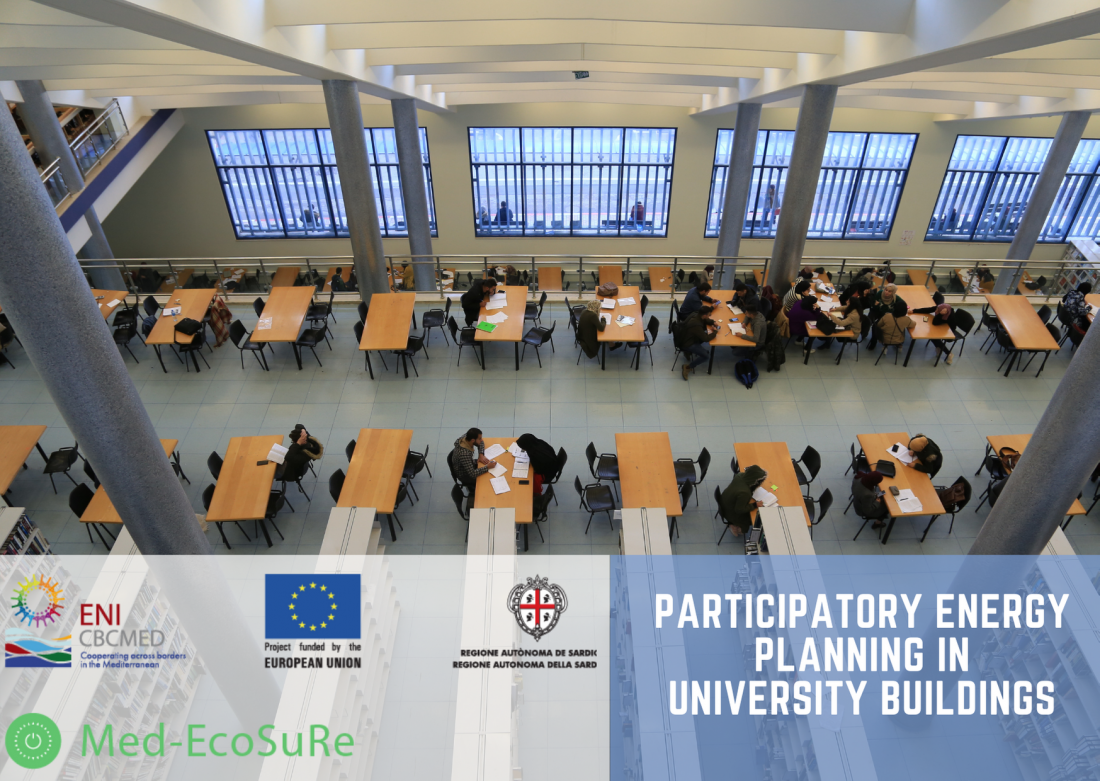Med-EcoSuRe develops a methodology for participatory energy planning in university buildings

The Department of Architecture and Industrial Design of the University of Campania and the Energy Research Center of An Najah National University, introduced a design methodology on planned interventions of participatory energy retrofit in Mediterranean university buildings, in a research work published in Sustainable Mediterranean Construction journal.
The methodology, set on the energy and technology analysis, identifies weaknesses and strengths particularly through information sharing and the creation of a transnational shared knowledge network
The main methodological innovation in this work is the Human-Centred Retrofit strategy. It improves the services and performances of the university building system, based on the cyclical approach of the Human-centred design.
The research team studied and proposed 5 specific Living Labs applicable to educational university buildings which will be able to face the possibility to meet the users’ changing needs and changing perception of comfort, thanks to changing technologies and new intervention solutions.
- Investigation Lab: is introduced as a data collection laboratory in order to explore the users’ perceptions and the students’ environmental impacts.
- Work up Lab: is introduced as a laboratory for studying the data collected to understand the methodologies to be implemented for the building sustainability.
- Traker Build Lab: is introduced as an investigation laboratory in order to know and trace the current behavior of the building with regard to the systems and objects that interact with the structure at “time zero” (indoor location).
- Energy Living Lab: is introduced as a laboratory for the use, assembly and management of the technologies used to face the expected and investigated sustainability and comfort
- Campus Calculator Lab: is introduced as a laboratory based on monitoring and control by software with the help of external staff and changes according to the seasons and the users’ perceptions several times a year.
Following the definition of these 5 types of living labs, an evaluation process was developed in order to lead the designers in the use of the most suitable participatory retrofitting strategy for satisfying the expected performances.
The planned interventions of Participatory Energy Retrofit, were tested on the Mediterranean university building stock, including three pilot university buildings of Med-EcoSuRe project through conducting an online training course on "energy efficiency action plan in the higher education building sector", which was an opportunity to experiment the methodology of participatory pnergy Audit, through a didactic action applied to three pilot university buildings, aimed at designing passive solutions for retrofitting.
Overall, the methodology of setting the Participatory energy planning considers not only the energy needs of the building and observed energy performances, but it also considers a third variable, that is the direct users’ judgment, originated from a proactive involvement throughout the process, aimed at assessing, among other things, the Indoor environmental quality and comfort perception.
The full scientific publication is available HERE









